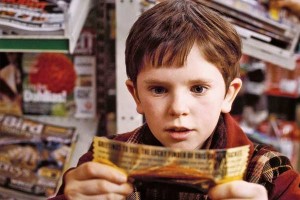As part of National Women’s History Month, I wanted to comment on an interesting video I recently watched on YouTube. It’s about the ‘Damsel in Distress’ trope. Although it’s central focus is the prevailing use of this trope in video games since the early 80’s, the perspective is actually quite a bit broader, drawing upon the origin of the trope in Greek mythology, as well as cinematic classics like the original King Kong and cartoons like Popeye. This 20min video is very interesting, especially if you were a child of the 80s & 90s and grew up with video games like I did. If you don’t like video games, or never played them, or think they all seem silly, there are still implications from this that are worth addressing in this blog post. Below is the video if you’re interested:
This video is nostalgic in many ways. Growing up I was a big fan of video games. Our family had regular Nintendo, Super Nintendo, Sega, Nintendo 64, Gamecube, and Xbox in our home. Since my college years, I’ve barely had any time to play the newer games. Yet I still get nostalgic when I think of some of the old games I used to play. Sadly, as this video aims to demonstrate, these beloved games contain a problematic trope that reduces women to weak and helpless objects.
The best example of this comes from the first game mentioned in the video, Dinosaur Planet—a video game starring a female protagonist named Crystal. This game was never released, however, but was instead transformed into the third installment of Star Fox, called Star Fox Adventures, in which the protagonist was changed into a male. I actually played this game when it came out in 2002. I thought it was a bit of a rip off of Zelda: The Ocarina of Time – objectively the greatest game ever developed! – but it was still fun. Having learned the backstory to this game in the video above I am a bit shocked. It’s sad that the developers transformed the female protagonist into a male. However, there are two obvious reasons why this happened, which are really two sides of the same coin: the coin of money. First, the female character was designed as a fox, which reminded the developers at Nintendo of Star Fox and they thought they could capitalize on the popularity of the franchise. Second, video games at the time were not targeted towards women except in overt and admittedly stereotypically-gendered ways. The market was therefore almost exclusively dominated by young boys and having a female protagonist may not have sold well. From a marketing standpoint all of this makes sense and is hardly surprising (though I am not saying that this is all fine and good… rather it makes me dislike marketing even more than I already did). Up until this point I don’t have earth-shattering problems with the switch. However, the next part is egregious. The original female protagonist was turned into a passive Damsel in Distress, and additionally, was turned into an unresponsive sexual figure. Surely this is objectification! Crystal simply should have been left out of the game altogether. This is a powerful example for the video’s main point. Whether you like video games or not, this is a rather telling movement toward gendered stereotypes and sexism.
The rest of the video goes through other major examples, including Mario and Zelda. The essential point of the video is that the Damsel in Distress trope perpetuates a Subject-Object dichotomy in which the subjects act and objects are passive. Thus, the Damsel in Distress trope objectifies women. The overuse of this trope certainly perpetuates unhelpful stereotypes about women (and men!), and there is no denying that. In fact, at its most basic, the trope is simply a lame re-hash of an unsophisticated plot. So in many ways I find this video helpful, not only for video games, but for broader culture as well.
Of course, the antidote to the overuse of the trope is creating smart and courageous female protagonists. Enter Joss Whedon—the creator of Buffy the Vampire Slayer, Firefly, and Cabin in the Woods. Whedon is well-known for creating strong feminine protagonists, and he is often asked why by interviewers. At a conference in 2006 he gave a speech in which he commented on the frequency with which he was asked this question. After sharing six different responses he’s given to the question – since he’s been asked so much he tries to think of all the reasons – his seventh and final response, which also ended his speech, was this: “because you’re still asking me that question.”
Surely we need more Katniss Everdeens and Ellen Ripleys in pop-culture. However, with much appreciation for the video, and a sincere sympathy with the issues raised, I do want to push back a little on this issue.
One of the claims regarding the objectification inherent in the trope is that the Damsel is essentially “stolen property.” The Damsel is merely the central object in a competition between male figures; a “ball” in an elaborate “sport,” so to speak. Yet is this really all that is going on here? Is it not possible that there is a redeeming quality to this trope? Is it possible to find one?
Given that the trope is over-used, and betrays unsophisticated writing, what good does the trope convey? At its best, the Damsel in Distress trope does not de-value women, but rather, demonstrates that they are worth great sacrifice and risk. That is, their humanity and inherent worth are on display. For instance, would anyone watching TAKEN think that Liam Neeson’s character is objectifying his daughter by trying to rescue her? Surely it is the sex-trafficing villains who are guilty of objectification!
As another example, what about the biblical passage of Ezekiel 16? No doubt certain interpreters find this text to be filled with gendered-stereotyping and inappropriate sexualized images, but the heart of this chapter should never cause one to cry foul. This chapter is about God’s triumphant rescue of his people — “I said to you in your blood, Live!” — and the rescue from our wayward inclinations. Is it possible, then, that the Damsel in Distress trope communicates something of the Gospel? I think of the trope in Sleeping Beauty, where the lifeless damsel is held captive by a dragon until the prince arrives—seems like a Christian allegory to me. Now, by bringing in the Gospel here, please do not misunderstand me for suggesting that the Gospel perpetuates the sexist stereotype inherent in the worst examples of the Damsel in Distress trope. I am merely suggesting that maybe the trope itself can have redeeming qualities that point us to the ultimate rescue—one that all men and women need.





13 Comments
Leave your reply.